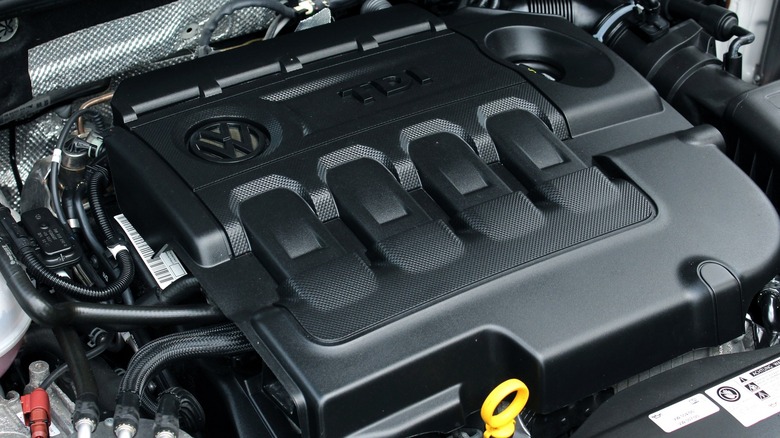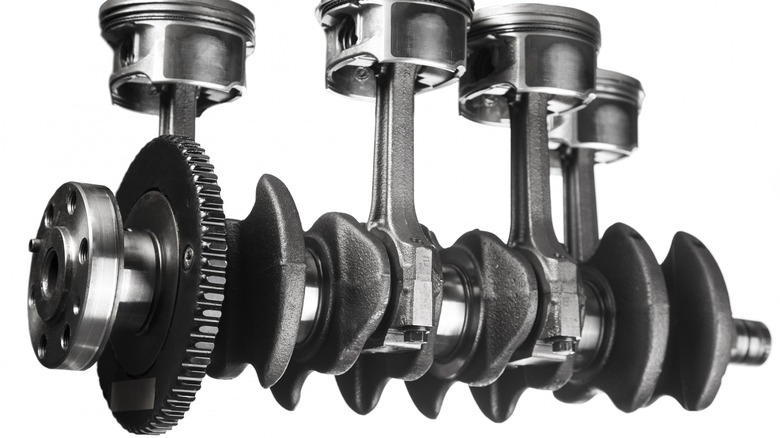Why Lawsuits, Not Performance, Could Kill The Scuderi Engine
As the world scrambles to achieve net zero carbon emissions in hopes of stabilizing the progression of climate change, some companies have made strides in reducing their impact on the environment. Brands like Bank of America, AT&T, Texas Instruments, and Northrop Grumman have positioned themselves to achieve net zero by 2050 through new internal processes. However, it's research and development companies like Scuderi Group that could pave the way to a cleaner future with significant changes to modern mechanics.
Springfield, Massachusetts native Carmelo Scuderi envisioned a concept that wouldn't just clean up one company's environmental impact. It would offer far-reaching benefits to global transportation, energy storage, and power generation, effectively reducing the global emissions rate.
The Scuderi Split-Cycle Engine was a stroke of genius that could have replaced the current "Otto cycle" engines powering automobiles and virtually all combustion-run devices today. That is, of course, until the Scuderi Group attracted the attention of the Securities and Exchange Commission (SEC), prompting lawsuits and investigations that all but killed the Scuderi Engine.
The Scuderi Split-Cycle Engine vs. Otto Cycle Engines
German engineer Nicolaus August Otto designed the Otto cycle engine that powers most gas vehicles today. Available in two- and four-stroke models, the Otto cycle produces the combustion needed to propel a car forward. The primary component of an Otto cycle engine is a crankshaft in a single cylinder, which performs two rotations for every pulse of power, with the reset period between the fourth and first rotations being when the engine releases the leftover exhaust.
Scuderi's design comprises two cylinders—a compression and a power cylinder. The compression cylinder performs the fuel intake and compression, which transfers to the power cylinder, where the fuel combusts and exhausts the produced emissions. According to claims made by the Scuderi Group, this process, where fuel is ignited every revolution instead of every two revolutions, as seen in the Otto cycle, saves energy and reduces toxic emissions. By halving the amount of work it takes to combust the fuel, the Scuderi engine is more efficient than an Otto cycle engine and increases torque, as well.
The SEC Investigates the Scuderi Group
Carmelo Scuderi filed a patent for his engine design in 2001 but unfortunately passed away nearly a year later. That left his legacy in the hands of the remaining Scuderi family, who started the process of bringing the engine to production in 2002 by founding the Scuderi Group.
Unfortunately, per findings by the SEC, despite raising money via investors, the family wasn't actually moving on Carmelo's design. Instead, it appeared as if the group was taking investor funding and using it for purposes like paying the family's salaries of $2.9 million from 2008 to 2011 and issuing bonuses for personal expenses.
According to the 2013 cease-and-desist proceedings issued by the SEC, from 2002 to 2012, the Scoleri group received $80 million from various individuals and investors. The investigation determined that stocks were improperly sold to investors, and many investors who did fund the split-cycle engine were not accredited and in a position to invest in the company.
In addition to salaries and bonuses, investor funds were found to be used to pay for trust and estate expenses, cover loans to individual family members, and pay off insurance premiums on policies that were canceled at a loss.
In response to its findings, the SEC imposed a $100,000 penalty on the group, but the ruling was just the start of a snowball of trouble that would soon hit the West Springfield company.
Investors File Suit Against the Scuderi Group
In response to the SEC's findings, investors of the revolutionary engine took notice of the company's lack of progress. In 2013, investor Paul Fournier filed a lawsuit against Scuderi, alleging a misuse of his funds. By 2016, a federal judge was ready to rule in Fournier's favor but encouraged the parties to settle, which they did privately.
In 2017, another pair of investors, Brian and Donna Moore, sued the Scuderi Group for misleading them into investing $10,000. That suit was also encouraged to settle out of court, as was a 2015 lawsuit imposed by Toyota subsidiary Hino Motors for a matter unrelated to the Scuderi Engine. In Hino's suit, the company claims it invested $150,000 in a research project that never came to light.
To this day, over 21 years since visionary Carmelo Scuderi filed his patent on the potentially revolutionary split-cylinder engine, the Scuderi Group has offered nothing to suggest the engine will ever go into production. Since the SEC investigation and subsequent lawsuits, the family has provided no assurance that it will continue working on Carmelo's vision.



